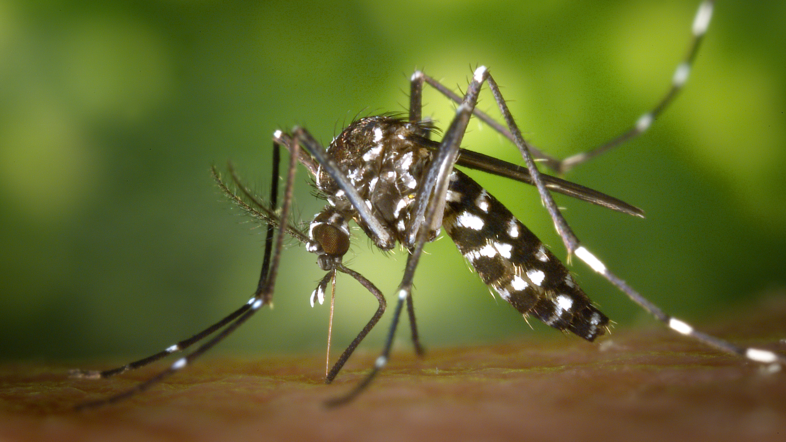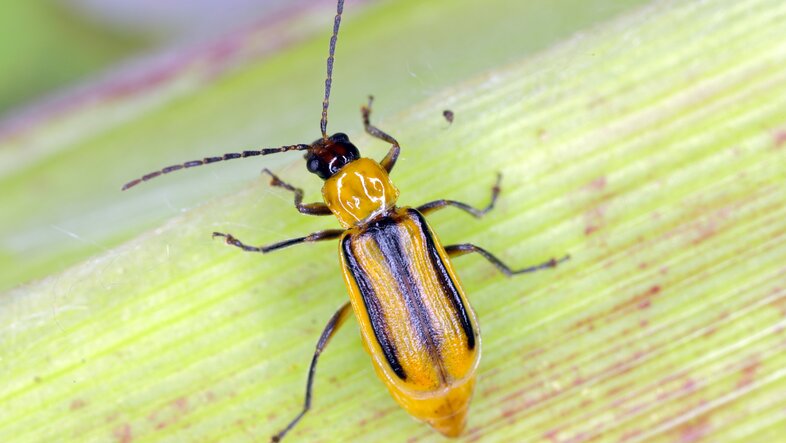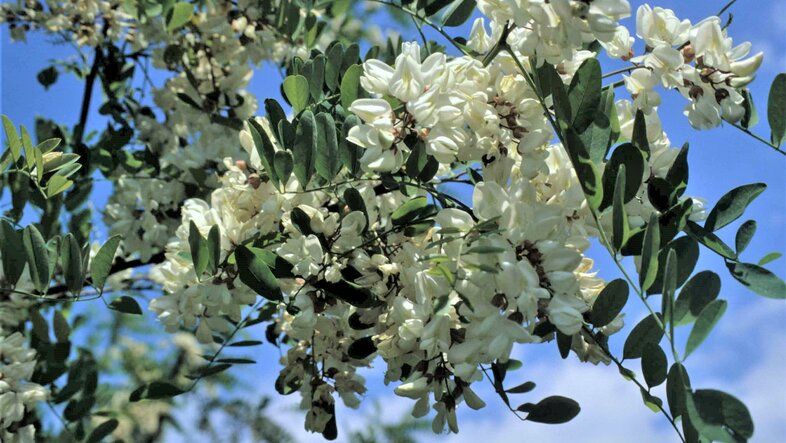Battling biological invasion
We are in the midst of a global biodiversity crisis. It is the result of a variety of changes in the environment caused by our behaviour. The main drivers of biodiversity loss include direct exploitation of species, changes in land- and sea-use, climate change, pollution and invasive alien species.
While our understanding of the first four of these drivers is fairly good, the dimension and impacts of biological invasions worldwide along with their future trends have received less attention. This has changed now! 4 September 2023 marks the release of a comprehensive assessment by the world biodiversity council (IPBES) on the state of biological invasions, their distribution, trends, impacts and their control worldwide.
Here I present some of the findings of this landmark publication that improves our understanding of this worldwide phenomenon and is likely to shape global and national policies on invasive alien species in the years to come.
What are invasive alien species?
Ecologists differentiate between alien species and invasive alien species. In general, species that are introduced outside their natural range through human activities are called "alien species". However, when alien species establish viable populations in the new environment, spread and cause harm to biodiversity, the environment, the economy or to society, they are referred to as "invasive alien species".
Alien species are on the rise and show no sign of slowing down
Biological invasions describe the process of the human-mediated transport, introduction, establishment and spread of species beyond their natural range. These new species are known as alien species. Currently we estimate that over 37,000 alien species are established across the globe, meaning that they have become a permanent part of the flora and fauna of their new habitat.
While the redistribution of species has always been linked to people and their movements, the dimensions of this exchange became a truly global phenomenon with the exploration of the Americas at the end of the 15th century. This period marks the beginning of the first truly global network facilitating the movement of people, goods and, well, species. Today we also refer to this period as the Columbian Exchange. Industrialisation in the mid-19th century and the increased globalisation from the mid-20th century onwards further accelerated the global exchange as the world became increasingly interconnected. The increasing introduction rates of alien species reflects these trends. Today, we record around 200 new alien species globally each year, and this trend is not expected to decrease in the near future.
More than 3,500 invasive alien species have negative impacts on people and nature
Not all of the alien species introduced around the world actually cause problems. Only some manage to adapt so well to their new environment that they spread widely and become detrimental to biodiversity or human well-being. We currently estimate that the number of so-called invasive alien species is just over 3,500. While lower in numbers, their impacts can be enormous. The current report estimates the annual costs from invasive alien species at US$ 394 billion and these costs have sharply increased in the past with this number quadrupling every decade since 1970.
But what actual impacts are we seeing? In terms of biodiversity, invasive alien species compete with native species for their place in ecosystems, often replacing native species and causing their local extinction.
An example in Austria is the North American signal crayfish (Pacifastacus leniusculus) that outcompetes native crayfish and also transmits the crayfish plague, to which it is immune but which usually kills native crayfish. Other invasive alien species can transform entire ecosystems again putting pressure on native species but also changing ecosystem properties and functions.
Invasive alien species can also have significant impacts on human livelihoods. While some alien species can be beneficial (e.g. food supply, climate change mitigation), the vast majority of reported impacts (80 %) are negative. These impacts include threats to food security, such as the Western corn rootworm (Diabrotica virgifera virgifera), which can reduce crop yields by up to 80 %. Others affect the integrity of infrastructure or, more directly, human health, such as the well-known ragweed (Ambrosia artemisiifolia) with its highly allergenic pollen. The tiger mosquito (Aedes albopictus) is expected to become more common in Central Europe as climate change unfolds and is also a carrier of diseases such as dengue fever and chikungunya.
Invasive alien species can have significant impacts on human livelihoods.Bernd Lenzner
While the situation seems dire, there are actions we can take
Despite these significant problems, the current report also provides an optimistic perspective on how invasive alien species can be managed. Over two chapters, the report outlines what actions decision-makers, conservationists and the general public can take. While impacts are generally case- and context-specific, there is a diverse portfolio of management actions that have been shown to be effective.
For example, eradication campaigns, particularly on islands, have been highly effective in removing invasive predators such as rats and cats. Over 88 % of such campaigns on islands have been successful in the past. On the mainland, however, eradication campaigns are more difficult and likely to be successful only in the early stages of invasion. In short, the report shows that prevention and early detection are by far the most cost-effective measures to prevent the introduction or establishment of alien species.
What we need for these measures are targeted and effective policy frameworks. In late autumn last year, the Kunming-Montreal Global Biodiversity Framework of the Convention of Biological Diversity was adopted, urging countries to take decisive action to safeguard and restore biodiversity globally. Invasive alien species are specifically addressed in the framework.
In reality, the directives have been implemented to varying degrees. While 80 % of countries have set some kind of goal for invasive alien species management, only 20 % have legally binding regulations, and almost half (45 %) are not investing enough or at all in invasive alien species management.
Overall, the report clearly shows that much remains to be done to reduce the impact of this major driver of the unfolding biodiversity crisis. Increased international cooperation, greater investment in research and capacity building, and greater public engagement and awareness are important steps towards a coordinated response.
What is the IPBES?
IPBES is short for Intergovernmental Science Policy Platform on Biodiversity and Ecosystem Services. As an intergovernmental organisation, it serves the purpose of improving the communication between scientists and policy-makers. Adopted in 2012 by the parties to the United Nations Convention on Biological Diversity (CBD), the platform currently includes 143 member states (with Palau being the most recent to join). The head office is located in Bonn, Germany.
One of the mandates of IPBES is the development of assessment reports compiling the available evidence surrounding different aspects of biodiversity and ecosystem services. One of the most impactful reports was the Global Assessment, released in 2019, which for the first time gives a comprehensive overview of the status, trends and policy and management options surrounding global biodiversity.
IPBES as a platform to foster international cooperation and support early career scientists
One of the key strengths of the IPBES assessments is the diversity of expertise and representation of experts from different regions and backgrounds. This ensures that the report includes the best possible knowledge across regions, research fields and languages. For example, the IPBES invasive alien species assessment involved a core team of 86 leading international experts (supported by over 200 contributing experts) from 49 countries in all regions of the world. In addition, the assessment process was supported by several consultation workshops with indigenous and local communities. The aim was to gather information not only from the established scientific literature, but also from local expertise.
Another aim of IPBES is to strengthen the scientific community. For this reason, each IPBES report also includes a group of early career scientists, called fellows, who serve as experts and work alongside the established experts within the different chapters of the report.
Through this programme, I participated in this report. This has already had a significant impact on my career since it enabled me to establish new collaborations and become better integrated in the global scientific community in the field of invasion biology. Fellows, like other experts, must be nominated by governments or organisations and go through a competitive selection process based on their expertise, geographic background and gender. This ensures a broad representation across areas of expertise and regions. Once selected, we basically take over the same roles as other experts in the assessment. We use our expertise to co-author specific chapters, acquire knowledge and data and contribute to analyses.
He started his academic career at the University of Bayreuth, Germany, focusing on native and endemic plants on oceanic islands, and then moved to the University of Vienna for his PhD on large-scale patterns of alien plant species distribution and assembly.



